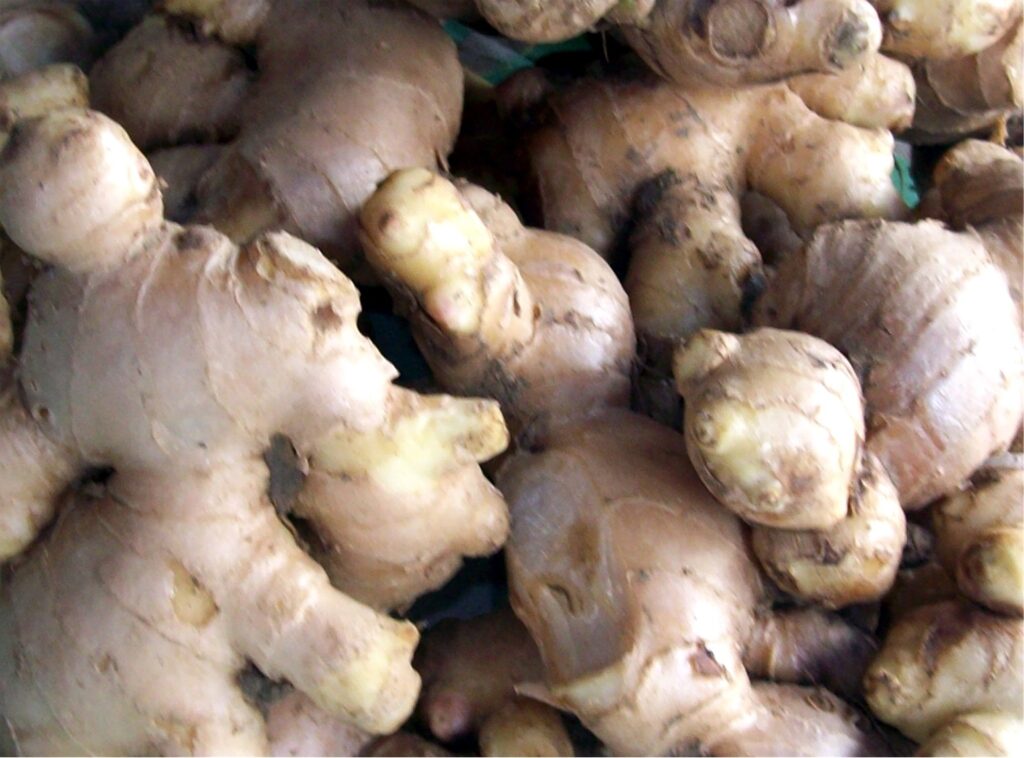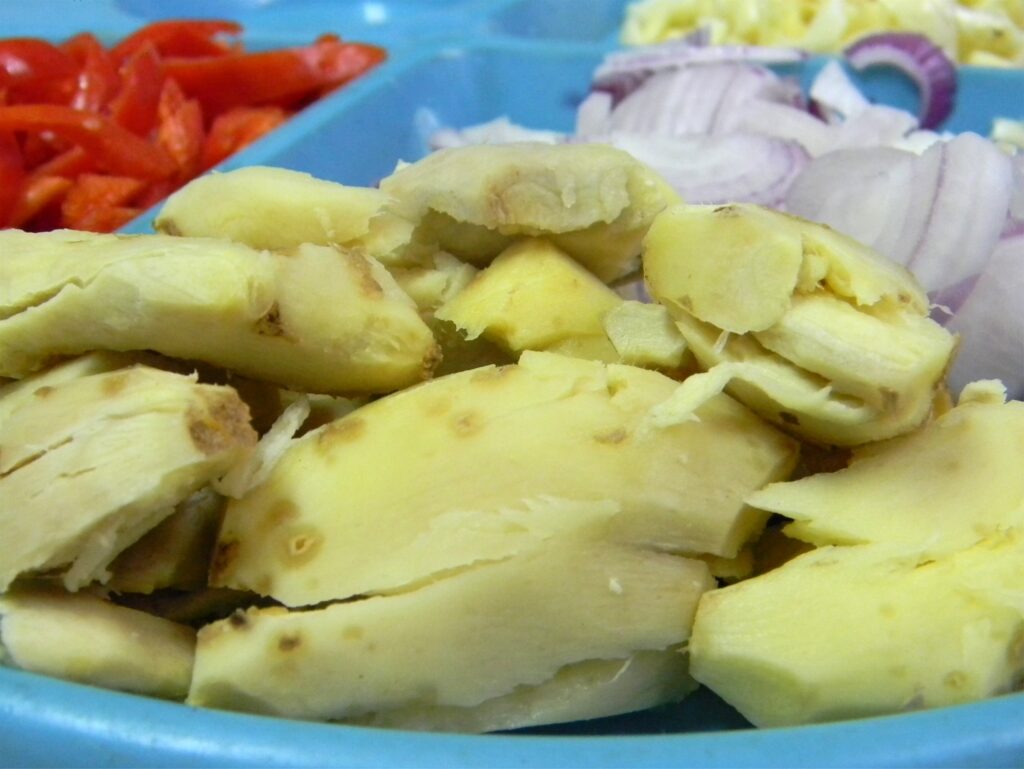Text and Photos by Henrylito D. Tacio
When coronavirus disease 2019 (COVID-19) hit the Philippines in March this year, the Department of Health recommended hand washing, social distancing, and staying at home as possible ways to control the virus from spreading.
On the other hand, the Department of Agriculture urged Filipinos to boost their body’s immune system to fight the virus attacks and reduce the risks of disease infections. “We have long been taught that the immune system helps the body fight off infections caused by viruses and speed up the recovery process after an infection,” explained Agriculture Secretary William Dar.
The body’s immune systems serve as the “soldiers” against intruders. “The vast network of cells and tissues is constantly on the lookout for invaders, and once an enemy is spotted, a complex attack is mounted,” wrote Tim Newman on the website of Medical News Today.
Incorporating specific foods into the diet may strengthen a person’s immune response. One of those that most Filipinos try to integrate into their diet during the COVID-19 pandemic is ginger (scientific name: Zingiber officinale), locally known as luya. It’s no wonder why the price went from P60 to P250 per kilo.
Ginger is derived from the Middle English gingivere, but ginger dates back over 3,000 years to the Sanskrit srngaveram, meaning “horn root,” which references its appearance. In Greek, it was ziggiberis, and in Latin, zinziberi.
The main active ingredients in ginger are gingerols, which are responsible for its distinct fragrance and flavor. Aside from having powerful anti-inflammatory compounds, ginger also has elements that help boost the immune system, some studies show.

“Due to its strong anti-inflammatory and antioxidant effects, ginger may boost immune health,” wrote Jillian Kubala for the website healthline.com. “Many test-tube and animal studies suggest that ginger can enhance immune response. What’s more, ginger has powerful antiviral and antibacterial properties.”
This must be one of the reasons why people use ginger to help recover from a cold or the flu. In 2013, researchers studied the effects of fresh ginger on one respiratory virus in human cells. The result indicated that a fresh finger might help protect the respiratory system.
Since ancient times, people have used ginger in cooking and medicine. In the Philippines, the traditional health drink is called salabat, which is made from boiled fresh or powdered ginger. In cooking, ginger is used to add flavor to some common dishes like tinola, goto, arroz caldo, paksiw, batchoy, and pinakbet.
In China, a drink made with sliced ginger cooked in sweetened water or a cola is used as a folk medicine for the common cold. In India, ginger is applied as a paste to the temples to relieve headaches.
The ancient Greeks welcomed ginger’s arrival and quickly put it to good use as a digestive aid. To lighten the load of a big meal placed on the digestive system, the Greeks would end an evening of fabulous fasting by eating some ginger wrapped in bread. Eventually, this practice evolved into the world’s first cookie – gingerbread.
In the United States, ginger is “generally recognized safe” by the Food and Drug Administration. However, it is not approved for the treatment or cure of any disease and is sold as an unregulated dietary supplement.
The Minnesota-based Mayo Foundation for Medical Education and Research recommends ginger for nausea and vomiting. “To prevent nausea after surgery,” it states, “ginger has been given as one gram by mouth one hour before surgery. For chemotherapy-induced nausea, capsules of ginger root powder have been given orally one gram per day for 5 days, starting on the first day of chemotherapy.”
Ginger does not prevent morning sickness, but it may help ease some of the nausea experienced during pregnancy, Australian researchers reported in the April 2004 issue of Obstetrics and Gynecology. Researchers from the University of South Australia in Adelaide gave nearly 300 women either 350 milligrams of ginger or 25 milligrams of vitamin B6 three times per day for 3 weeks. The researchers found that both ginger and vitamin B6, which is sometimes taken to counteract morning sickness, worked equally to alleviate nausea symptoms.
Motion sickness can make even the most enthusiastic traveler miserable. A 1982 study revealed that people prone to motion sickness who took ginger lasted 57 percent longer in a computerized rocking chair than people who took over-the-counter remedies. Another study showed that taking two to four capsules of dried ginger before traveling in a car, boat, plane, or trains prevented motion sickness in 90 percent of the people who participated in the study.
“To combat travel sickness, take a quarter of a teaspoon of powdered ginger or a centimeter slice of fresh root ginger at least 20 minutes before you get in the car or board a ferry,” suggests an article that appeared in Reader’s Digest.
In recent years, ginger has been investigated as a potential weapon in the battle of the bulge, according to the International Journal of Obesity. Preliminary test-tube research shows that ginger boosts thermogenesis or calorie burning. By measuring a complicated series of reactions in rats’ tissue, researchers found that ginger made the tissues use more energy than they would normally have.
Although it is much too early to tell if this will benefit those with heart disease, a few preliminary studies suggest that ginger may lower cholesterol and prevent the blood from clotting. A 1994 study conducted in India revealed that 5 grams of ginger a day significantly inhibits platelets’ ability to clump, which in turn reduces the risk of clogged arteries in people with heart disease. Less blood clotting means less risk of a heart attack.

Now, here’s a word of warning: Though generally recognized as safe, ginger can cause heartburn, bloating, gas, belching, and nausea, particularly if taken in powdered form. Allergic reactions to ginger generally result in a rash. Individuals who have had ulcers, inflammatory bowel disease, or blocked intestines may react badly to large fresh ginger quantities. Children should not use ginger under 2 years of age.
So, if there’s a crop that Filipino farmers should get engaged in, it’s planting ginger. It can be planted throughout the year, and just like two other spices – onion and garlic – ginger doesn’t succumb to deterioration.
But in spite of its suitability to Philippine conditions, ginger is still a “neglected” crop. Few farmers plant it, and their product is not enough to meet domestic consumption. There is a big demand for ginger in special powdered form in Japan and Germany. In the domestic market, food factories engaged in meat canning and meat processing desperately need high-quality ginger. Sadly, local sources cannot meet the demand.
However, farmers who want to grow ginger should consult the Department of Agriculture to determine the venture’s feasibility in their respective areas. Those intending to tap the export market may inquire with the Department of Trade and Industry about the requirements and standards to be met.
Ginger can be grown in flat to slightly rolling areas with well-drained, light to medium textured soil high in organic matter and pH of 6.8-7.0. It can grow in elevations of up to 1,500 meters above sea level with about 200-300 centimeters annual rainfall every year.
A farmer needs about 800 to 1,500 kilograms of seed pieces to plant a hectare. Ginger roots are stored under the shade and covered with banana or coconut leaves. Only healthy rhizomes with sprouts or eyes are selected for planting.
Here are some valuable tips in growing ginger as shared by the Laguna-based Philippine Council for Agriculture, Aquatic and Natural Resources and Research and Development (PCAARRD):
Land preparation. The field is cleared of bushes or stubbles of the previous crop to facilitate land preparation. These can be used in compost piles and should not be burned. After doing so, the field is plowed twice and then harrowed to pulverize the soil. Furrows one meter apart are made. For one hectare, three to five tons of fully decomposed chicken manures are incorporated into the soil.
Planting. This is done at the start of the rainy season. Pre-germinated seed pieces are distributed in furrows 30 centimeters apart and covered lightly with soil. In small-scale plantings, the newly-planted seed pieces are mulched with rice straw or coconut leaves.
Generally, ginger is intercropped with perennial crops such as coconut and coffee. In Cavite, it is a common practice to plant ginger (0.3 meters by 3 meters) with papaya (3 meters by 3 meters), pineapple (0.3 meters by 0.75 meters), and tomato (1 meter by 3 meters).
Fertilization. As ginger takes up large amounts of nutrients, it is necessary to fertilize the crop. Per hectare, the general fertilizer requirement of NPK is 180 kilograms, 180 kilograms, and 255 kilograms, respectively. A hectare of ginger requires 11.5 bags 14-14-14 and 4 bags of 0-0-60 in addition to five tons of chicken or animal manure. The manure is incorporated during furrow preparation. Inorganic fertilizers are applied as sidedress at 30 and 60 days after planting.
Irrigation. Ginger requires light but frequent irrigation during the vegetative stage if rainfall is not evenly distributed. Depending on soil type and seasonal rainfall, irrigation varies from four to seven days.
Weeding. Generally, ginger requires regular hand weeding during its growth period. One month after planting, hand weed is recommended. The frequency of subsequent weeding depends on weed density. To suppress weed growth, the plants may be mulched with coconut leaves or rice straw.
Harvesting. Harvest time depends on the requirements of consumers. For the local market, after 10 to 11 months; for pickling and salting, 5 to 7 months; for dehydration, 6 to 8 months; and for fresh ginger export, after 7 to 10 months. However, harvesting should be done before the rhizomes become fibrous or when the leaves or stalks are yellow and withering.
Three men can harvest the crop. One digs up every hill with a spading fork; another pulls out the plants, shakes off the soil, and lays them on the bed in windrows; the third cuts off stems without breaking ginger bulbs.

